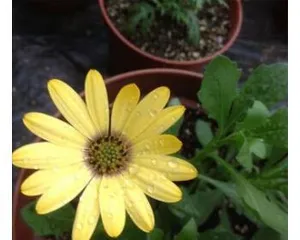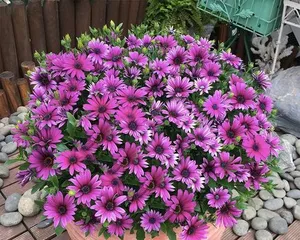Blue daisy is a very beautiful flower, with colorful petals and a unique flower shape. However, the growing environment for blue daisies is quite demanding, especially with high temperature requirements. How cold can blue daisies tolerate? How can we ensure it grows healthily in winter? Next, let's explore this in detail.

What is a Blue Daisy
Blue daisy, also known as daisy chrysanthemum, is a plant of the Asteraceae family. It grows in relatively cold environments and is a mountain plant. The petals of the blue daisy come in two colors, light purple and light yellow, and are very beautiful.
Blue Daisy's Temperature Requirements
Blue daisies have very high temperature requirements and cannot tolerate high temperatures and drought. They are more suitable for growing at temperatures of 10-20°C and require sufficient water and humidity.

Blue Daisy's Cold Tolerance
Blue daisy is a plant with relatively strong cold tolerance, capable of growing at lower temperatures. In the cold winter, blue daisies can withstand low temperatures of -25°C, which is why they grow in cold, high-altitude environments.
How Can Blue Daisies Grow Healthily in Winter
In winter, blue daisies need to be kept warm to prevent damage from low temperatures. Additionally, they need sufficient water and light to ensure healthy growth.
What to Note When Planting Blue Daisies in Winter
When planting blue daisies in winter, it is important to choose the right soil and planting containers, and avoid strong sunlight and dry environments.

Watering Blue Daisies in Winter
In winter, blue daisies do not need frequent watering, but it is necessary to maintain appropriate humidity to prevent the soil from becoming too dry. Generally, watering once a week is sufficient.
Fertilizer and Fertilization Time for Blue Daisies
Blue daisies need moderate fertilization in winter, but not excessively. Generally, fertilize once every two weeks or so.
How to Prevent and Control Pests and Diseases for Blue Daisies
In winter, blue daisies are prone to pests and diseases, such as powdery mildew and aphids. We can use pesticides for spraying or use biological pesticides for control.
How to Improve the Cold Tolerance of Blue Daisies
We can appropriately adjust the growing environment of blue daisies, such as lowering the indoor temperature and increasing indoor humidity, to improve their cold tolerance.
How to Protect Blue Daisies from Cold Air
In winter, we can build simple coverings for blue daisies to protect them from cold air and ensure healthy growth.
How to Avoid Freezing Damage to Blue Daisies
In winter with low temperatures, blue daisies are susceptible to freezing damage. We can use insulation materials to keep them warm and prevent freezing damage.
How to Prune Blue Daisies Correctly
In winter, blue daisies can be pruned appropriately. We can prune off withered flowers and leaves to improve the growth quality of the blue daisy.
How to Prevent and Control Diseases in Blue Daisies
In winter, blue daisies are susceptible to pathogens. We can choose non-toxic, environmentally friendly disease control agents for spraying to prevent and control diseases.
How to Increase Nutrients for Blue Daisies
In winter, we can appropriately increase the nutrients for blue daisies to improve their growth quality. For example, we can add some organic fertilizer or liquid fertilizer.
Blue daisy is a plant that is more suitable for growing in cold environments, with relatively strong cold tolerance. In winter, we need to pay attention to keeping them warm, watering appropriately, and fertilizing to ensure their healthy growth.